Abstract
Over 700 causal prophylactic and radical curative antimalarial drugs have been discovered during the screening of approximately 4000 chemical compounds in rodent and simian malaria models. Causal prophylactic activity in the Plasmodium berghei—rodent model was demonstrated by 10 distinct groups of chemicals: 1) tetrahydrofolate dehydrogenase inhibitors, 2) naphthoquinones, 3) dihydroacridinediones, 4) tetrahydrofurans, 5) guanylhydrazones, 6) analogues of clopidol, 7) quinoline esters, 8) dibenzyltetrahydro-pyrimidines, 9) 6-aminoquinolines, 10) 8-aminoquinolines.
Of the causal prophylactic compounds, only the 6- and 8-aminoquinolines were capable of curing persistent exoerythrocytic infections of P. cynomolgi in rhesus monkeys. The 6-aminoquinolines were substantially less active than primaquine.
This report describes a series of 4-methyl-5-phenoxy-6-methoxy-8-aminoquinolines, which are potent blood schizontocides and radical curative drugs. The most active member of this series, 4-methyl-5-(3-trifluoromethylphenoxy)-6-methoxy-8-[(4-amino-1-methylbutyl)| amino]quinoline succinate (WR 225448), was 5 times more active than primaquine in curing persistent exoerythrocytic infections of P. cynomolgi in rhesus monkeys.
As a blood schizontocide, WR 225448 was effective in animal models against P. berghei, P. cynomolgi, P. vivax, and both drug-sensitive and drug-resistant strains of P. falciparum. WR 225448 was also more toxic than primaquine in rats on subacute (28-day) administration.
Full text
PDF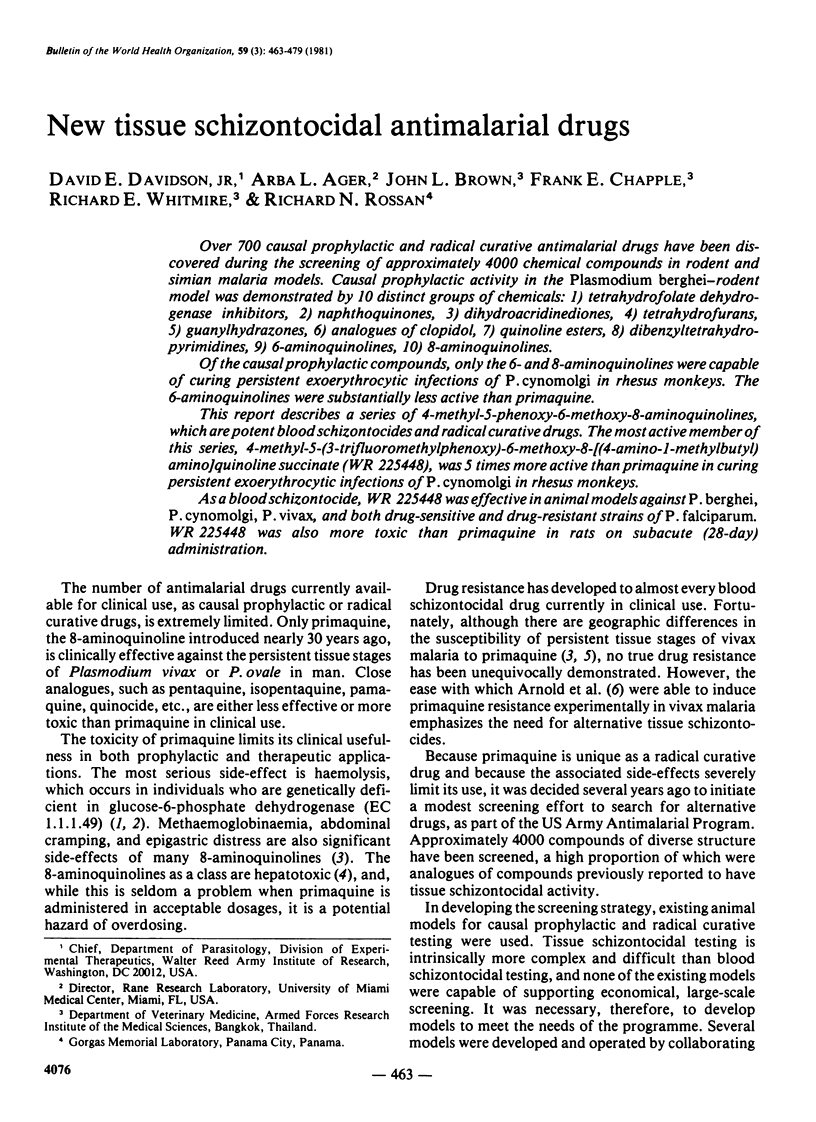
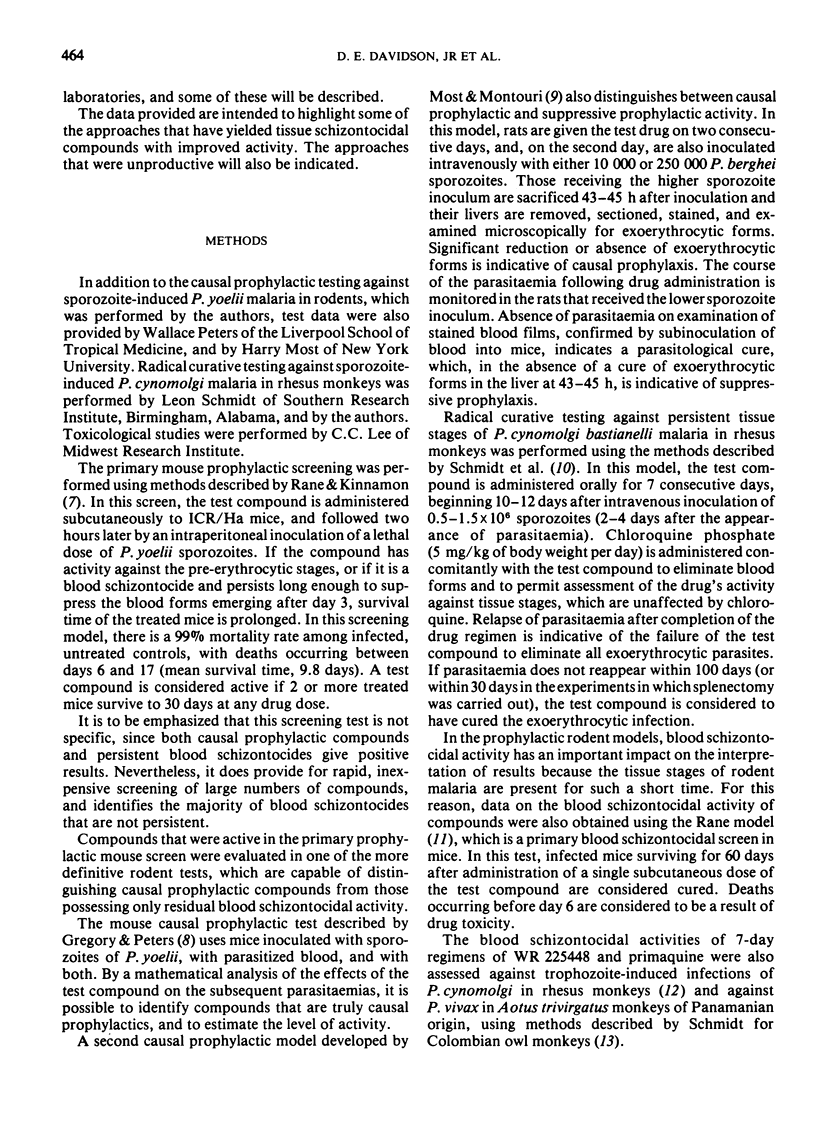

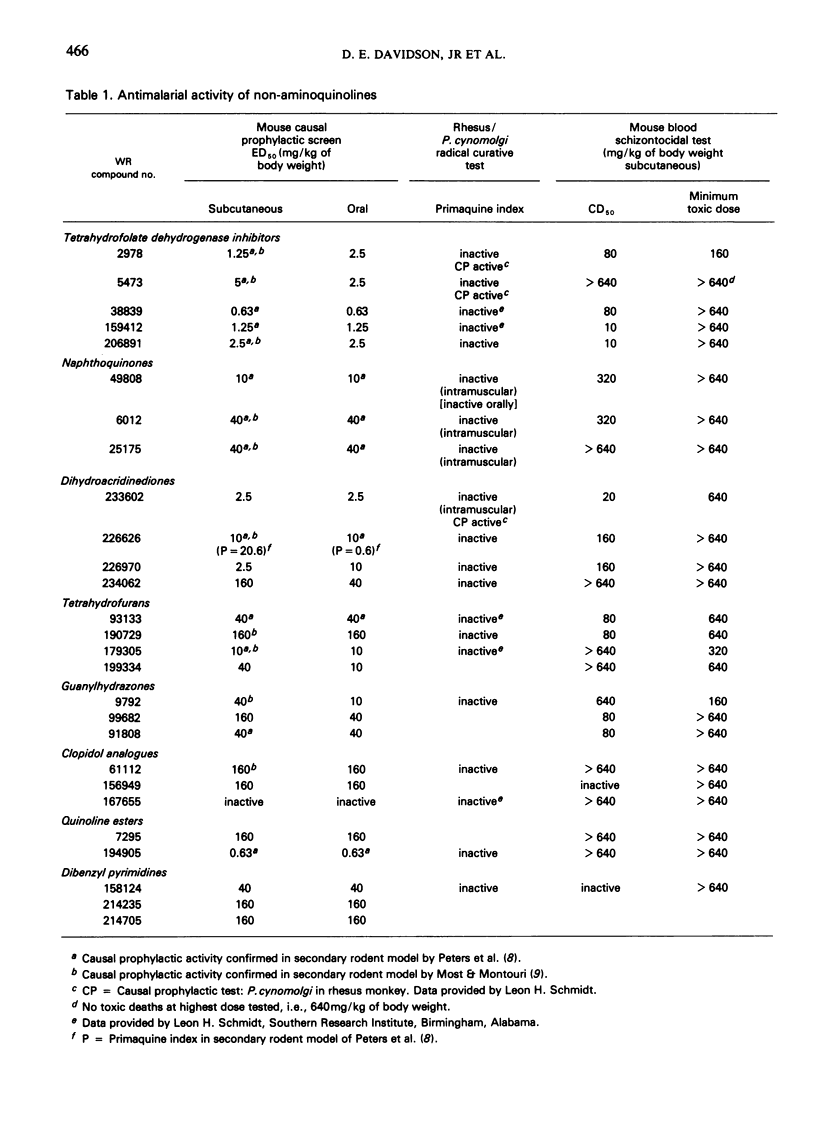
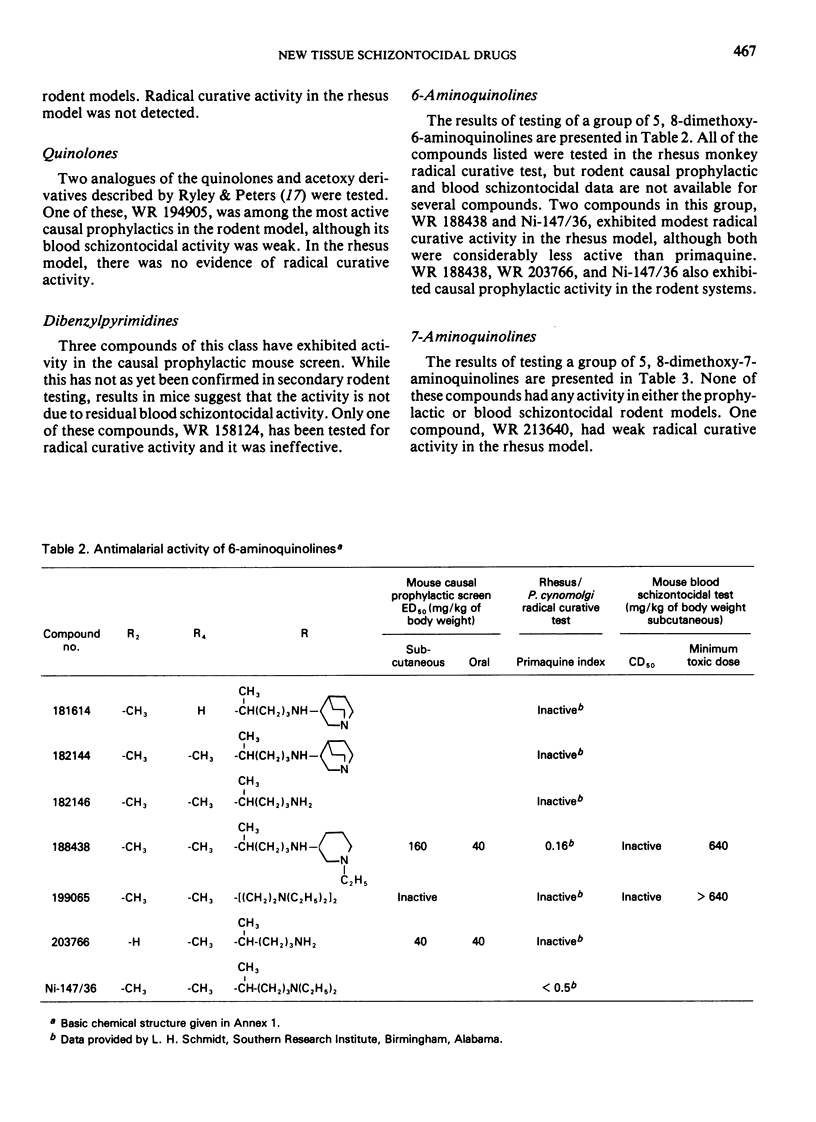
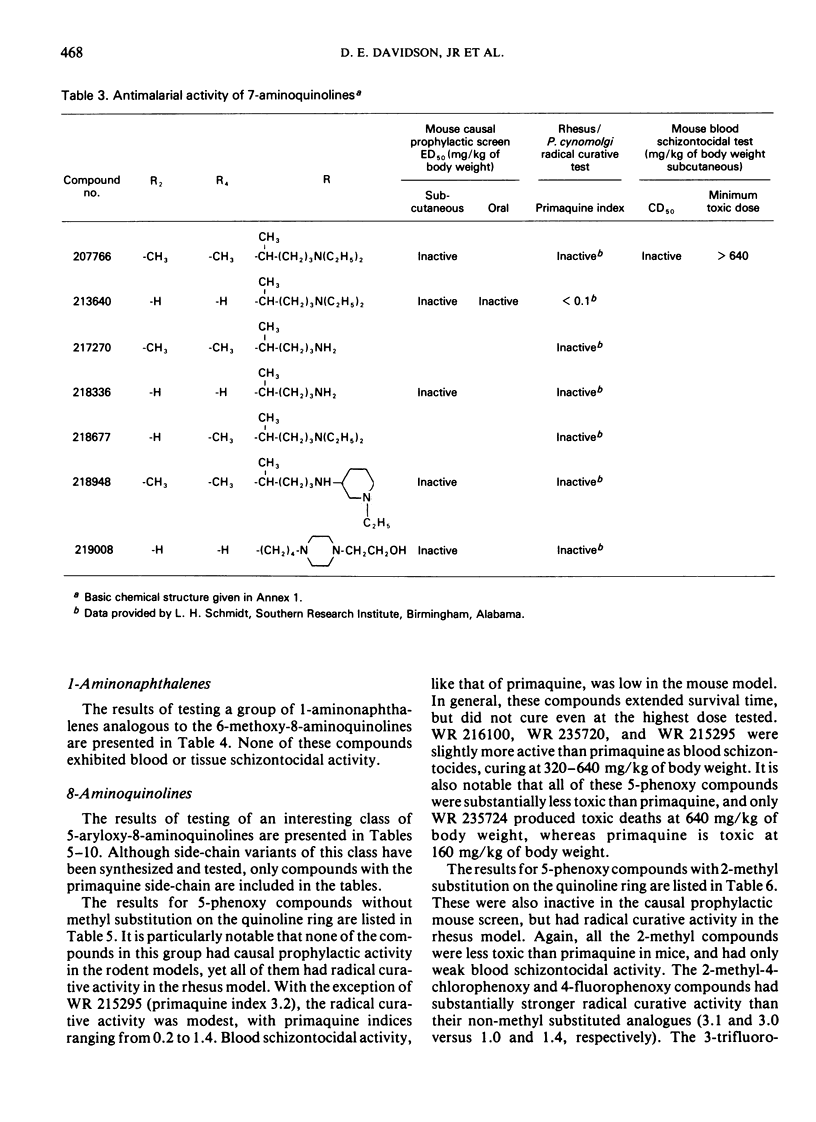
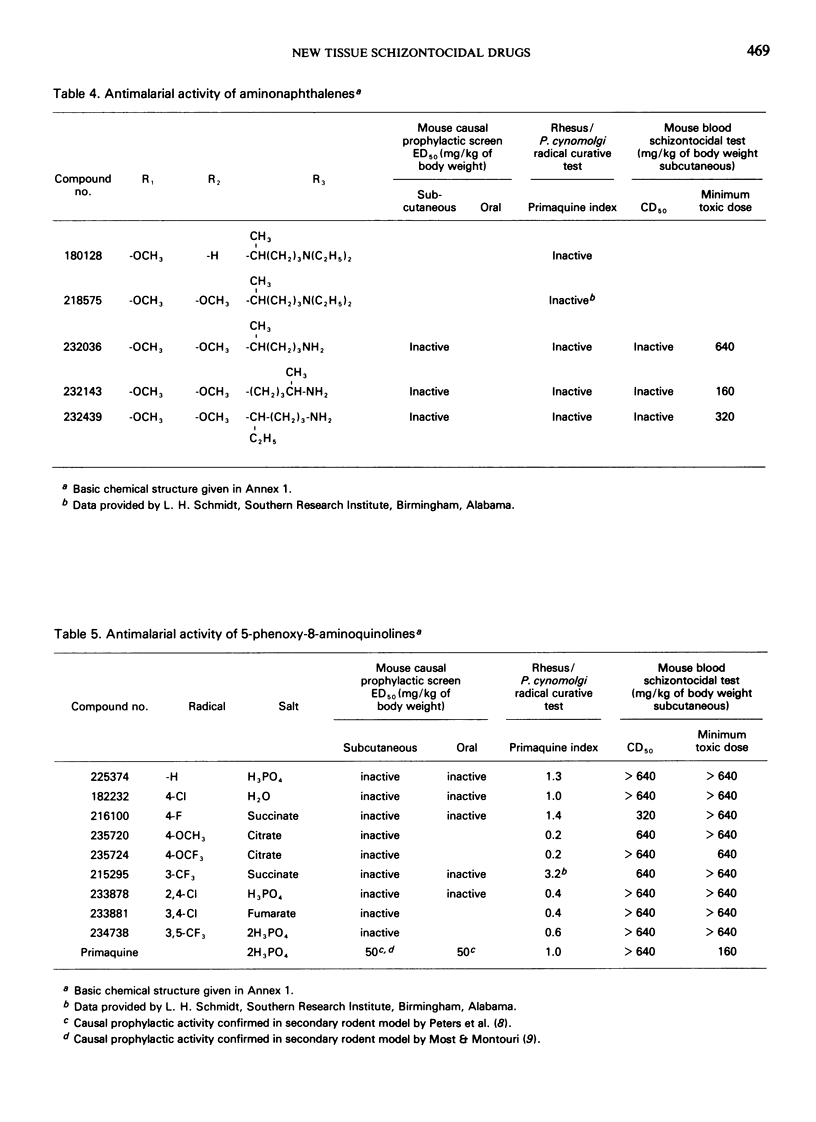
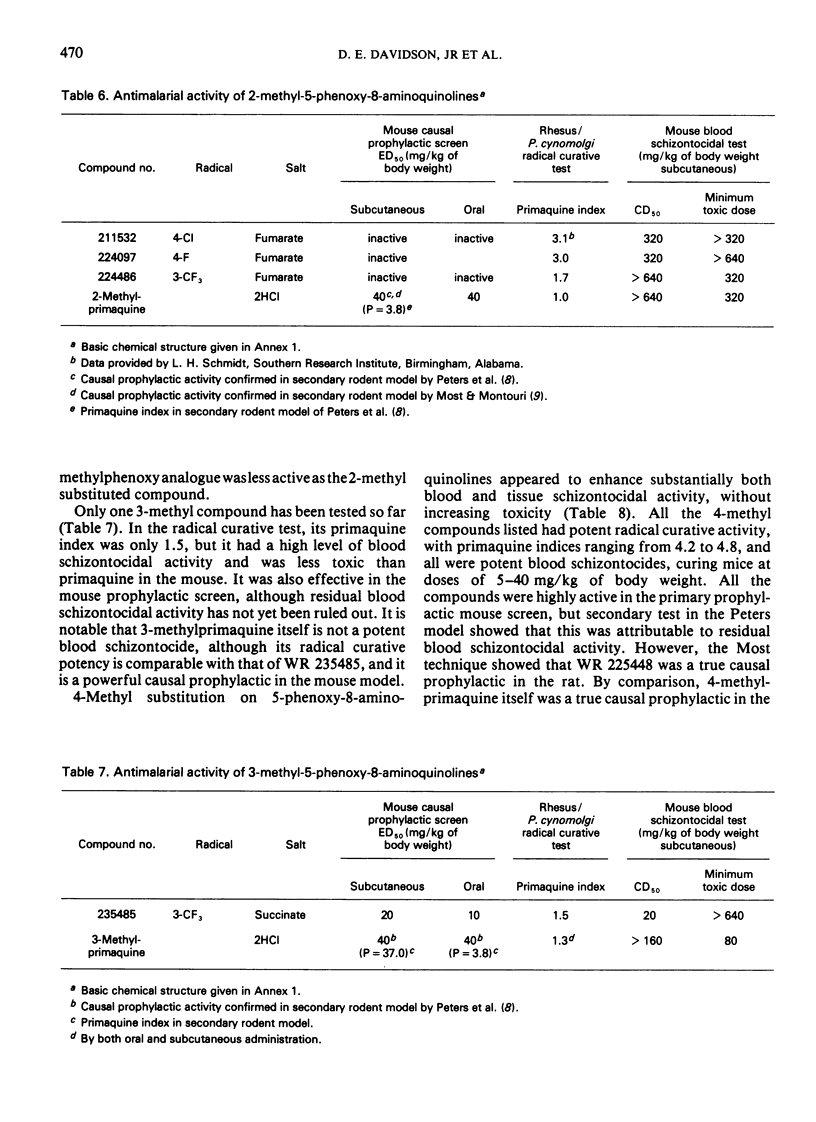


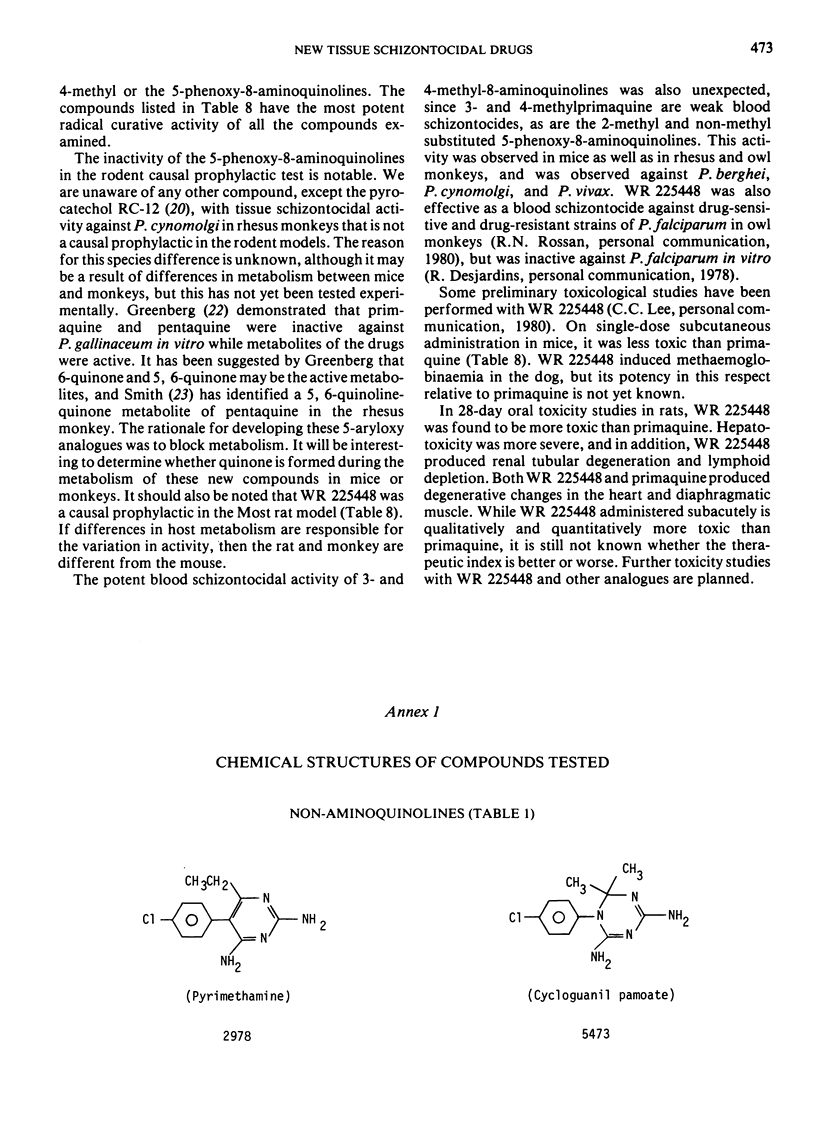

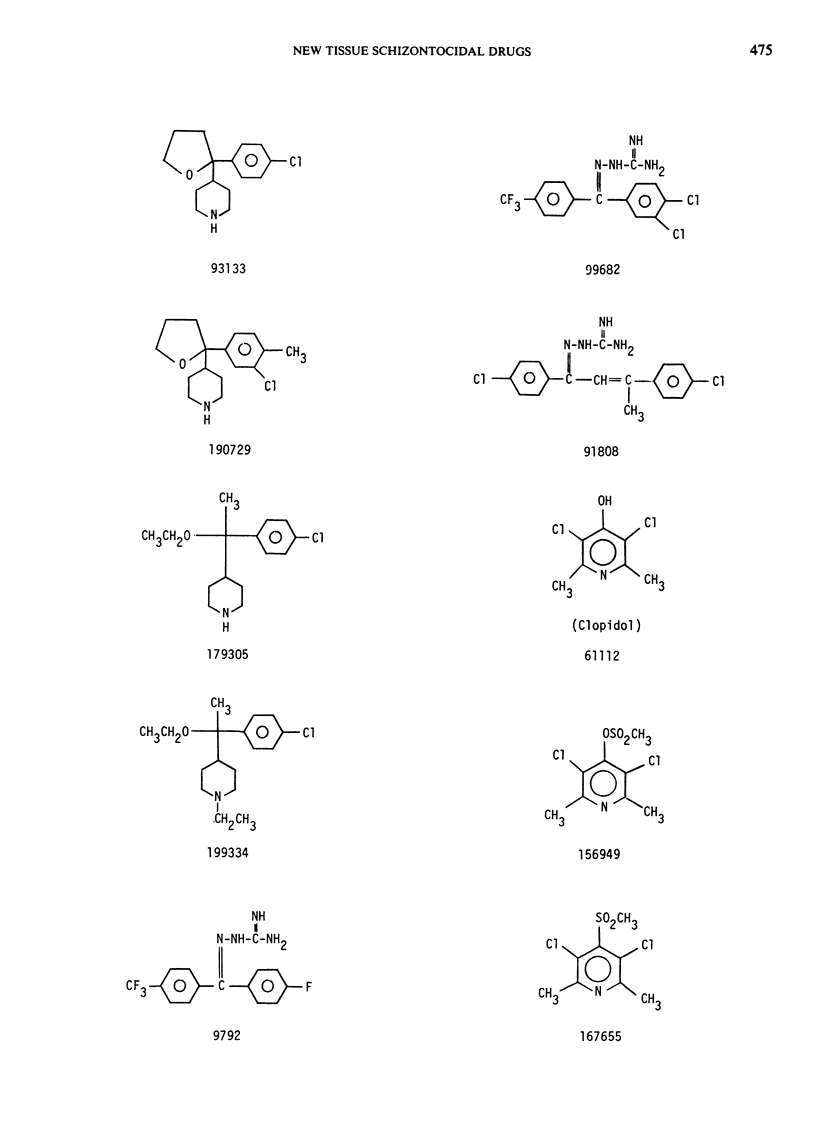

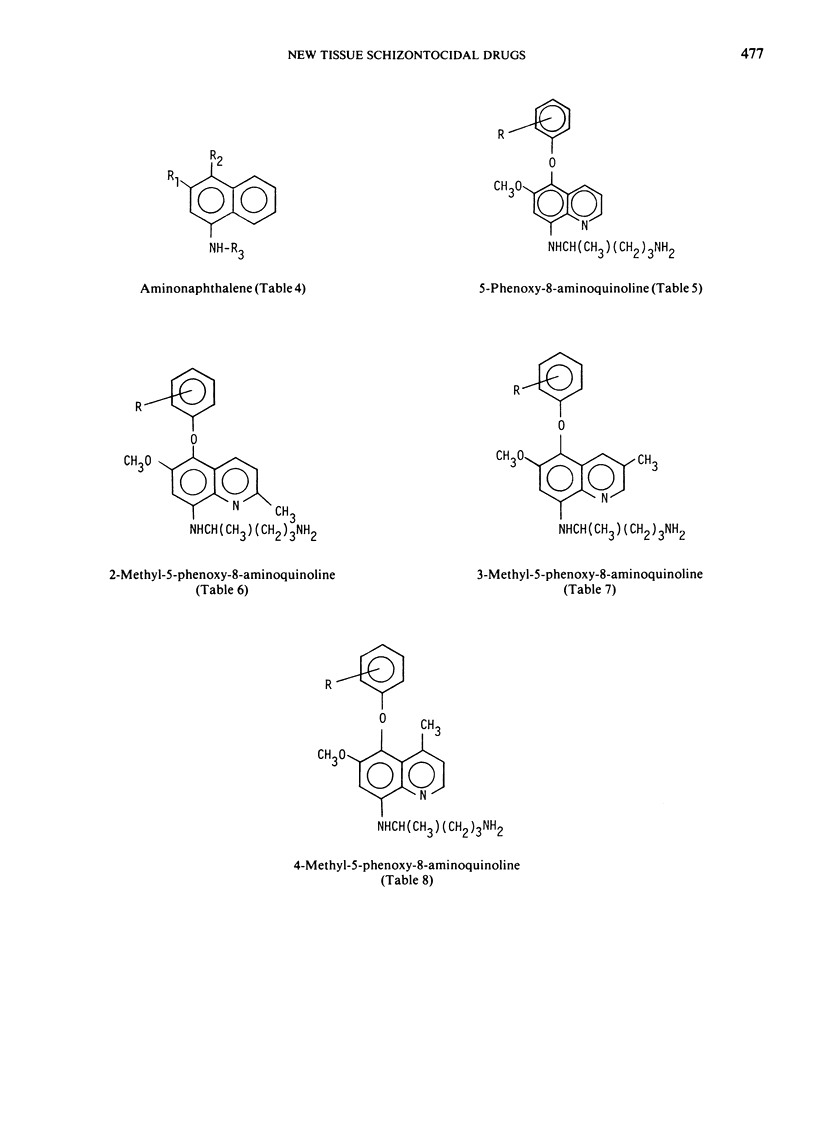

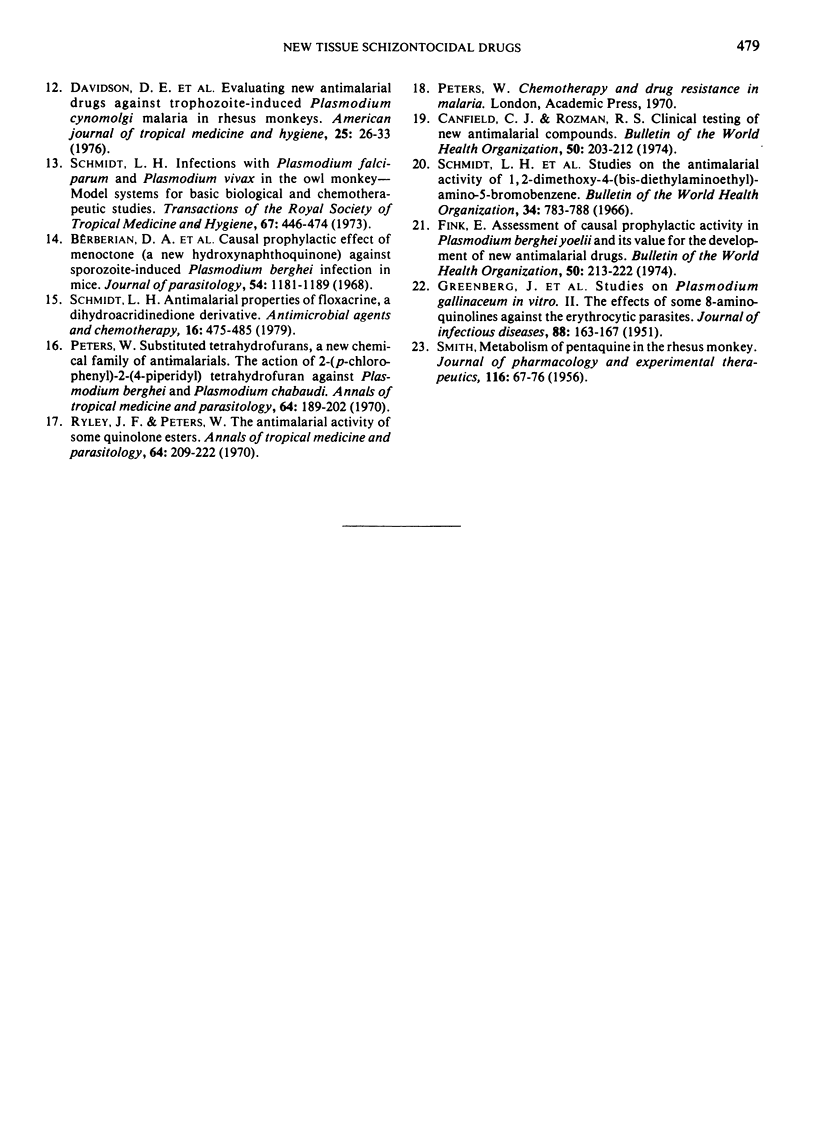
Selected References
These references are in PubMed. This may not be the complete list of references from this article.
- ALVING A. S., CARSON P. E., FLANAGAN C. L., ICKES C. E. Enzymatic deficiency in primaquine-sensitive erythrocytes. Science. 1956 Sep 14;124(3220):484–485. doi: 10.1126/science.124.3220.484-a. [DOI] [PubMed] [Google Scholar]
- ALVING A. S., JOHNSON C. F., TARLOV A. R., BREWER G. J., KELLERMEYER R. W., CARSON P. E. Mitigation of the haemolytic effect of primaquine and enhancement of its action against exoerythrocytic forms of the Chesson strain of Piasmodium vivax by intermittent regimens of drug administration: a preliminary report. Bull World Health Organ. 1960;22:621–631. [PMC free article] [PubMed] [Google Scholar]
- ARNOLD J., ALVING A. S., CLAYMAN C. B. Induced primaquine resistance in vivax malaria. Trans R Soc Trop Med Hyg. 1961 Jul;55:345–350. doi: 10.1016/0035-9203(61)90103-1. [DOI] [PubMed] [Google Scholar]
- Berberian D. A., Slighter R. G., Freele H. W. Causal prophylactic effect of Menoctone (a new hydroxynaphthoquinone) against sporozoite-induced Plasmodium berghei infection in mice. J Parasitol. 1968 Dec;54(6):1181–1189. [PubMed] [Google Scholar]
- Canfield C. J., Rozman R. S. Clinical testing of new antimalarial compounds. Bull World Health Organ. 1974;50(3-4):203–212. [PMC free article] [PubMed] [Google Scholar]
- Davidson D. E., Jr, Johnsen D. O., Tanticharoenyos P., Hickman R. L., Kinnamon K. E. Evaluating new antimalarial drugs against trophozoite induced Plasmodium cynomolgi malaria in rhesus monkeys. Am J Trop Med Hyg. 1976 Jan;25(1):26–33. doi: 10.4269/ajtmh.1976.25.26. [DOI] [PubMed] [Google Scholar]
- Fink E. Assessment of causal prophylactic activity in Plasmodium berghei yoelii and its value for the development of new antimalarial drugs. Bull World Health Organ. 1974;50(3-4):213–222. [PMC free article] [PubMed] [Google Scholar]
- GREENBERG J., TAYLOR D. J., JOSEPHSON E. S. Studies on Plasmodium gallinaceum in vitro II. The effects of some 8-aminoquinolines against the erythrocytic parasites. J Infect Dis. 1951 Mar-Apr;88(2):163–167. doi: 10.1093/infdis/88.2.163. [DOI] [PubMed] [Google Scholar]
- Peters W. The chemotherapy of rodent malaria. XII. Substituted tetrahydrofurans, a new chemical family of antimalarials. The action of 2-(p-chlorophenyl)-2-(4-piperidyl)-tetrahydrofuran against Plasmodium berghei and Plasmodium chabaudi. Ann Trop Med Parasitol. 1970 Jun;64(2):189–202. [PubMed] [Google Scholar]
- Rane D. S., Kinnamon K. E. The development of a "high volume tissue schizonticidal drug screen" based upon mortality of mice inoculated with sporozoites of Plasmodium berghei. Am J Trop Med Hyg. 1979 Nov;28(6):937–947. doi: 10.4269/ajtmh.1979.28.937. [DOI] [PubMed] [Google Scholar]
- Ryley J. F., Peters W. The antimalarial activity of some quinolone esters. Ann Trop Med Parasitol. 1970 Jun;64(2):209–222. doi: 10.1080/00034983.1970.11686683. [DOI] [PubMed] [Google Scholar]
- SCHMIDT L. H., ROSSAN R. N., FISHER K. F. THE ACTIVITY OF A REPOSITORY FORM OF 4,6-DIAMINO-1(P-CHLOROPHENYL)-1,2-DIHYDRO-2,2-DIMETHYL-S-TRIAZINE AGAINST INFECTIONS WITH PLASMODIUM CYNOMOLGI. Am J Trop Med Hyg. 1963 Jul;12:494–503. doi: 10.4269/ajtmh.1963.12.494. [DOI] [PubMed] [Google Scholar]
- Schmidt L. H., Alexander S., Allen L., Rasco J. Comparison of the curative antimalarial activities and toxicities of primaquine and its d and l isomers. Antimicrob Agents Chemother. 1977 Jul;12(1):51–60. doi: 10.1128/aac.12.1.51. [DOI] [PMC free article] [PubMed] [Google Scholar]
- Schmidt L. H. Antimalarial properties of floxacrine, a dihydroacridinedione derivative. Antimicrob Agents Chemother. 1979 Oct;16(4):475–485. doi: 10.1128/aac.16.4.475. [DOI] [PMC free article] [PubMed] [Google Scholar]
- Schmidt L. H., Rossan R. N., Fradkin R., Woods J., Schulemann W., Kratz L. Studies on the antimalarial activity of 1,2-dimethoxy-4-(bis-diethylaminoethyl)-amino-5-bromobenzene. Bull World Health Organ. 1966;34(5):783–788. [PMC free article] [PubMed] [Google Scholar]


